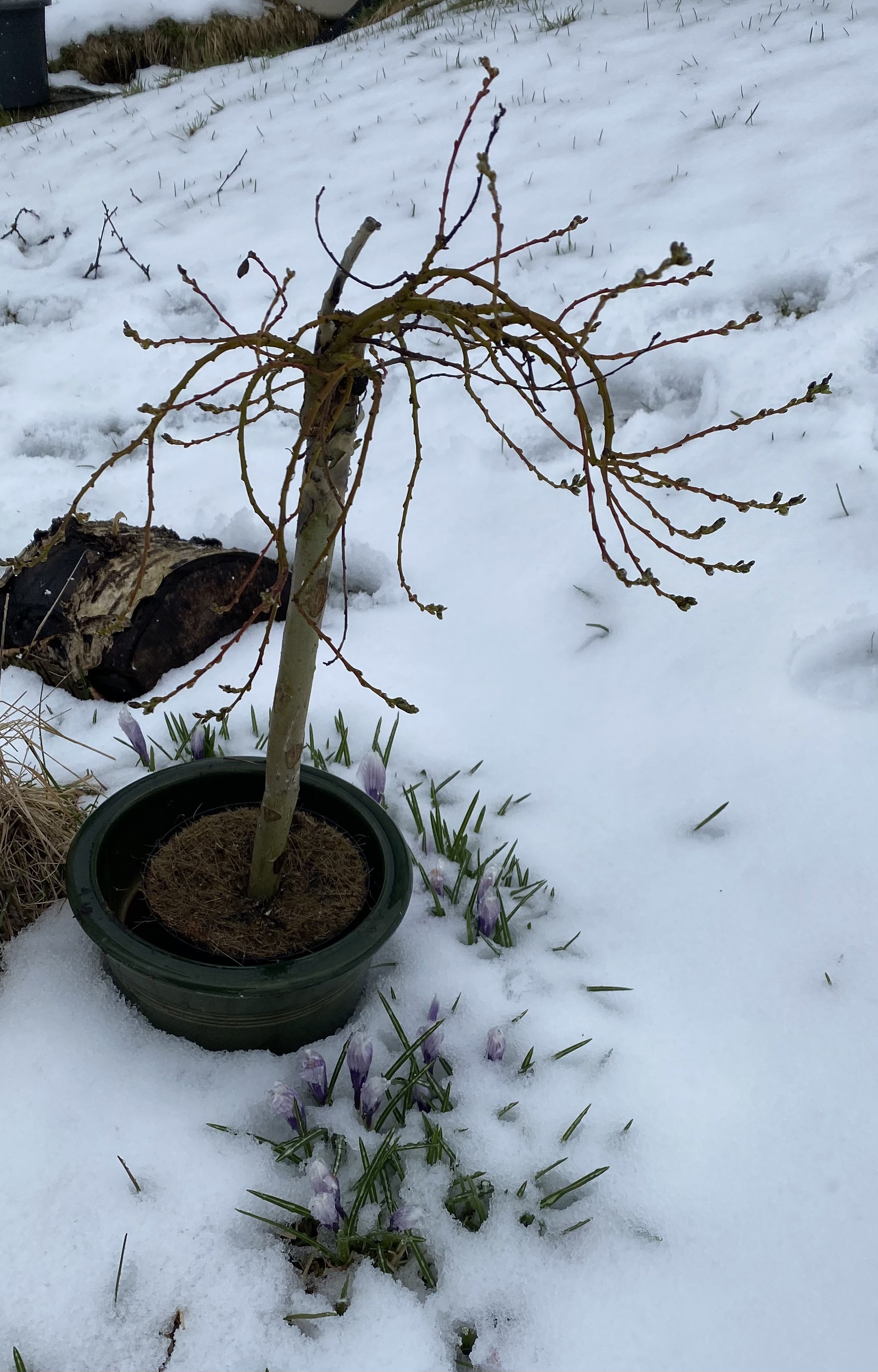May Day! May Day!
/A day of Maypoles and maids bedecked with floral crowns?
No!
I bring you valiant crocus battling the sleet, and a willow with buds ready to burst forth! This is May Day in the North!
The running joke is that we have two seasons here in the Arctic: White Winter and Green Winter. Sure, ha ha, especially in the rainy summers when temperatures hover around 10 C (50F).
Little does it help when my media feed is full of friends farther south posting pictures of green grass, flowerbeds gone rampant, and joyous shedding of warm clothing as the sun catches hold.
Nope. Not yet, at least not yet up here.
Eight Seasons
While I grew up with four seasons, living in the North has given me an affinity for the concept of eight seasons, as is traditional for the Sami (formerly known as Lapplanders). These seasons are of varying lengths, and associated with the cycle of herding reindeer. I am not following the reindeer, but do find this division very logical. In the following list you will find an overview of the seasons. The comments are not comprehensive, giving only a sampling of what a season can bring.
Winter (December, January, February)- December is the month with no sun, first returning in January. The first thin rays of sun are like a heavy cover being lifted. These months are cold, with storms. The cod fisheries begin in earnest at the end of Winter, and the catch is hung on racks for producing stock fish. Snows often don’t stay until after the New Year.
Spring-Winter (March, April)- The days longer and the sun gains strength. Ski season is in full swing. This year, I heard the swans arrive on March 22, but they did not settle until the end of April, as the lake had iced over again. The weather shifts, with periods of pre-spring, followed by the return of snow. April’s end brings clear lakes, and moose browsing lakeside, even if snow does make patchy returns. Early lambing begins.
Spring (May)- Snow still falls, but often combined with sleet, and it does not last. We take the studded tires off the car. Lambing is in full swing, and it is a joy seeing them in the low pastures. Summer flowers can be planted as weather allows. Trees burst into leaf, seemingly overnight.
Spring-Summer (June)- This is truly a month of flowers. The last sheep are sent to mountain grazing. This is also the month of light, with midnight sun.
Summer (July)- July brings more flowers, and outdoor living as weather allows. Strawberries come in at end of month. We begin to notice the days growing shorter as well.
Autumn-Summer (August) Blueberries, cloudberries, and other fresh produce are in abundance. This is often the warmest and sunniest season.
Autumn (September-October)-Now come the lingonberries, tart and bright red. Domestic apples, and plums are available in shops, to my great joy. Sheep are brought down from grazing, and fresh lamb is in abundance. Hunting season begins. The weather grows colder, with rain and flurries of slushy sleet. Studded tires go on the car in October, and it is time to secure outdoor equipment against early storms.
Autumn-Winter (November) Snow climbs down the mountains, and roads can be icy. This month often feels heavy as we march towards full dark. The season of candles and log fires begins in earnest.
I love the cycle of the seasons, each turning to the next. I often think about the resources I see throughout the seasons, and reflect on how these were utilized historically. Food for thought, research, and practical trials.
Source for seasonal divisions:
Åtte årstider. Gaavnoes- Sørsamisk digitalt. Published 07.01.2017 by South-Trøndelag County Library. ( https://gaavnoes.no/2017/01/atte-arstider/ ). Accessed 01.may.2022


